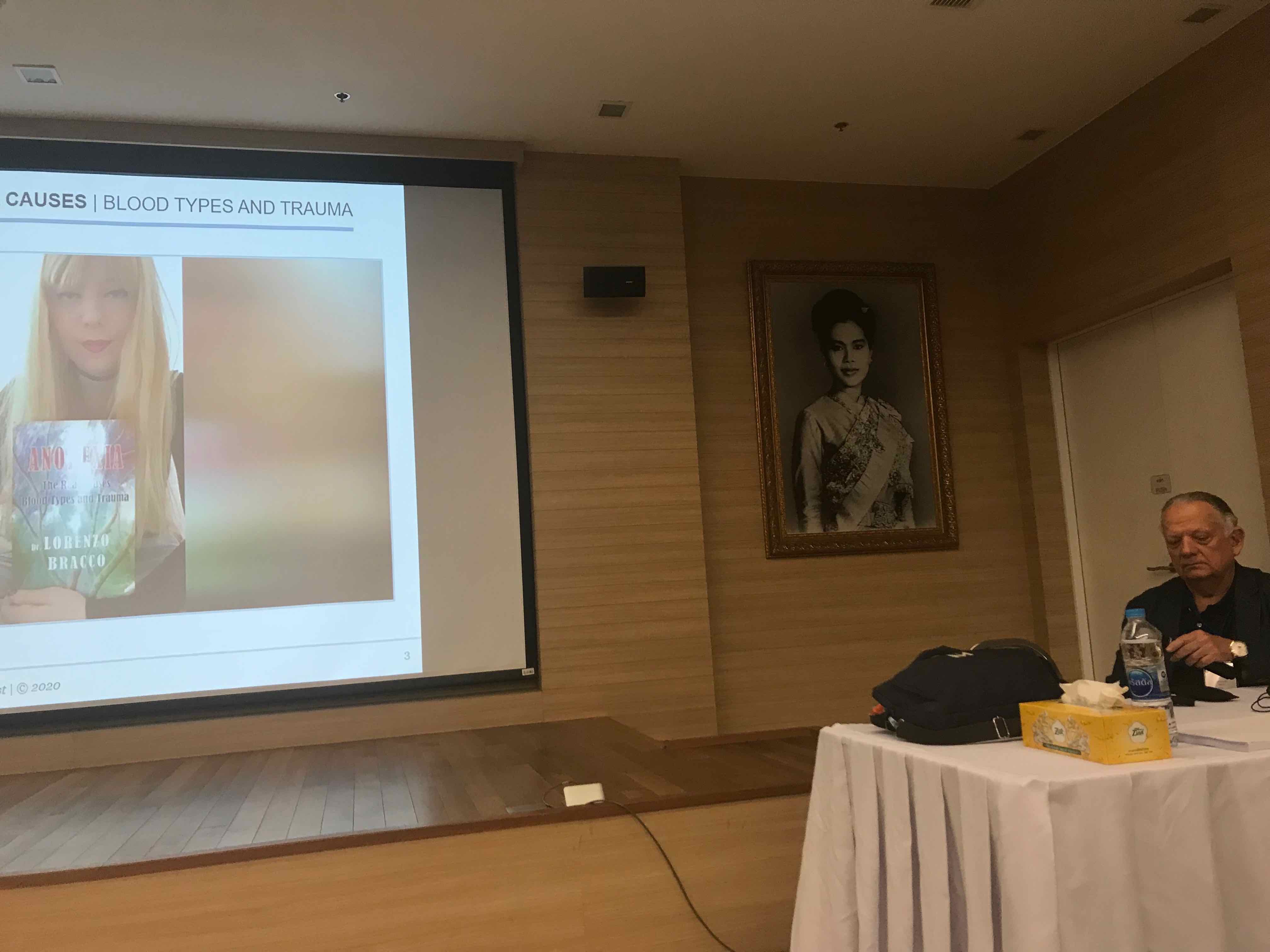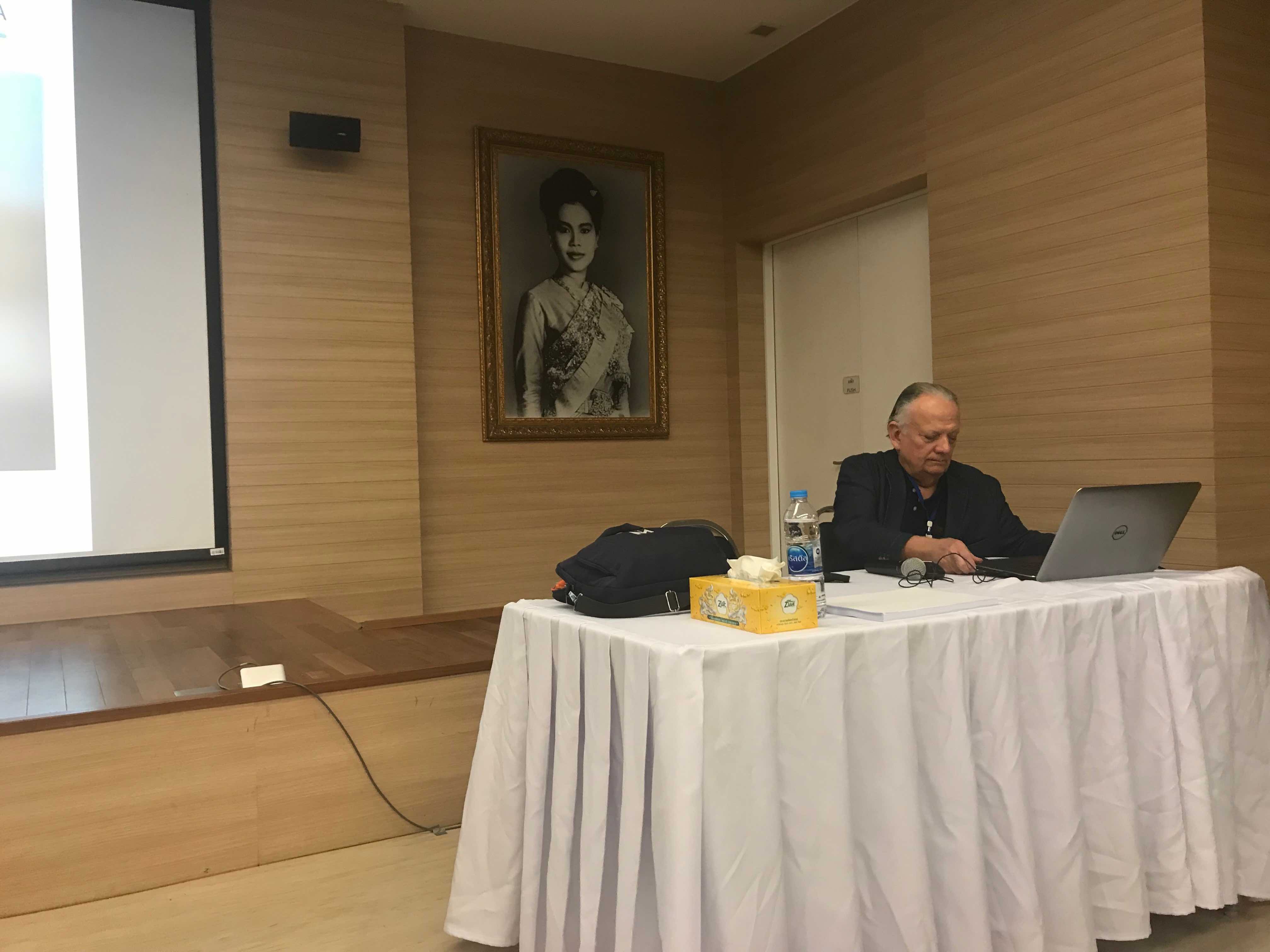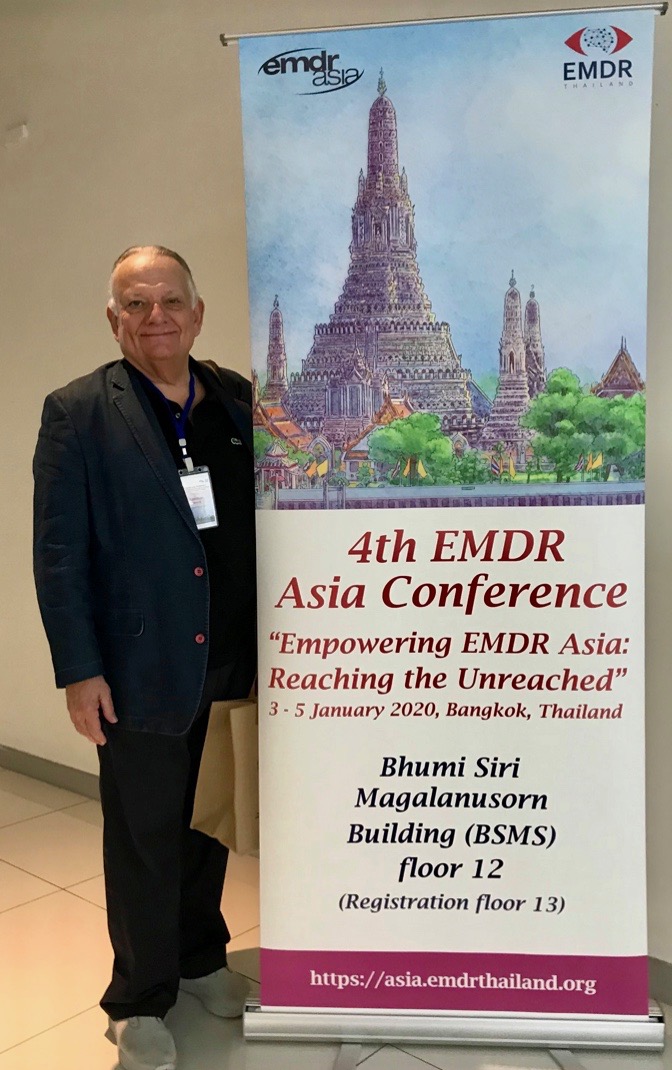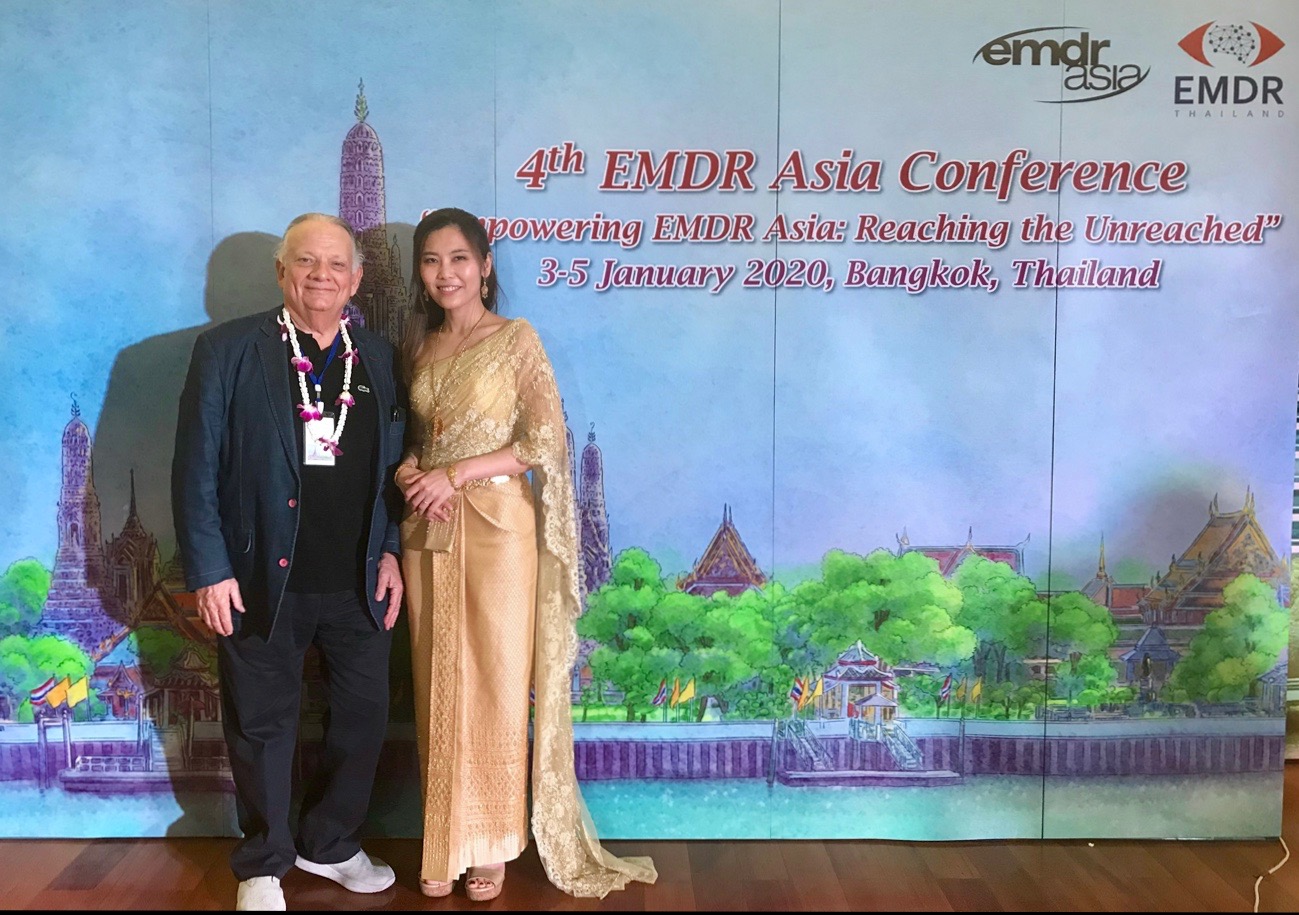The 4th EMDR Asia Conference
3-5 January 2020
Venue: King Chulalongkorn Memorial Hospital, Pumisiri-Mangalanusorn Building, 12th and 13th Floors
Address: 1873 Ratchadamri Rd., Pathum Wan District, Bangkok, Zipcode: 10330
ABSTRACT
Autor: Lorenzo Bracco, Medical Doctor, Specialist in Physiatry, Psychotherapist
Email lorenzobraccofoundation@gmail.com www.ecologicalnichediet.com
Phone +39 011 6688992 Mobile +39 333 1632321
Corso Marconi 37
10125 Torino, Italy
TITLE
BIOLOGICAL CONDITION (LATIN: “CONDITIO SINE QUA NON”), FOR ANOREXIA OF THE FEMALE ADOLESCENT: DIFFERENT BLOOD TYPES OF MOTHER AND DAUGHTER + TRAUMATIC BLOOD CONTACT BETWEEN THE TWO DURING PREGNANCY AND/OR BIRTH.
- Background: Anorexia of the Female Adolescent is the most important and most dangerous kind of anorexia. This anorexia manifests itself precisely during the phase of a young woman’s blossoming femininity and fertility. With the menarche begins the fertility of the girl. After some cycles, anorexia may arise. This anorexia is characterized by weight loss and loss of the menstrual cycle for more than three months. There can also be relapses of this kind of anorexia over the course of life.
- Introduction: My new theory is that Anorexia of the Female Adolescent, in addition to the girl’s psychological causes, needs a “conditio sine qua non” (= a necessary but not sufficient condition): Different mother/daughter blood types (0, A, B, AB) and traumatic contact between the two blood types during pregnancy and/or birth”.
- Objectives: To reduce the mortality rate and the consequences of anorexia by providing a theory that allows us to have early or even predictive diagnosis and to be able to use EMDR to solve the consequences on the mother/daughter relationship of the Trauma caused by contact between incompatible blood types.
- Methods: 25 years ago, in a purely casual way, I found the blood type difference between an anorexic patient and her mother. Pregnancy had been with placental detachment and birth was traumatic, presumed causes of a mother/daughter blood contact. From that day on, I checked, in the case of Anorexia of the Female Adolescent, the blood types of the anorexic girl and her mother.
- Results: In my collection of data (more than 100 cases in 25 years): only the girls who have a different blood type (0, A, B, AB) from the mother are anorexic and from the patient’s history we could think of a mother/daughter blood contact during the pregnancy. There are no exceptions in my data.
Conclusions: My theory facilitates early diagnosis by limiting observation, for Anorexia risk, to only daughters with a different blood type than that of the mother. Recognizing this “conditio sine qua non” for Anorexia of the Female Adolescent allows us an early diagnosis, a predictive hypothesis and a right view of mother/daughter relationship, that is not conflicting but is simply perturbed by an immunological alarm. The Trauma, resulting from the contact between incompatible blood types, causes the mutual alarm that perturbs the mother/daughter relationship and can be fruitfully treated with EMDR. It is a reframing from conflict to alarm.






